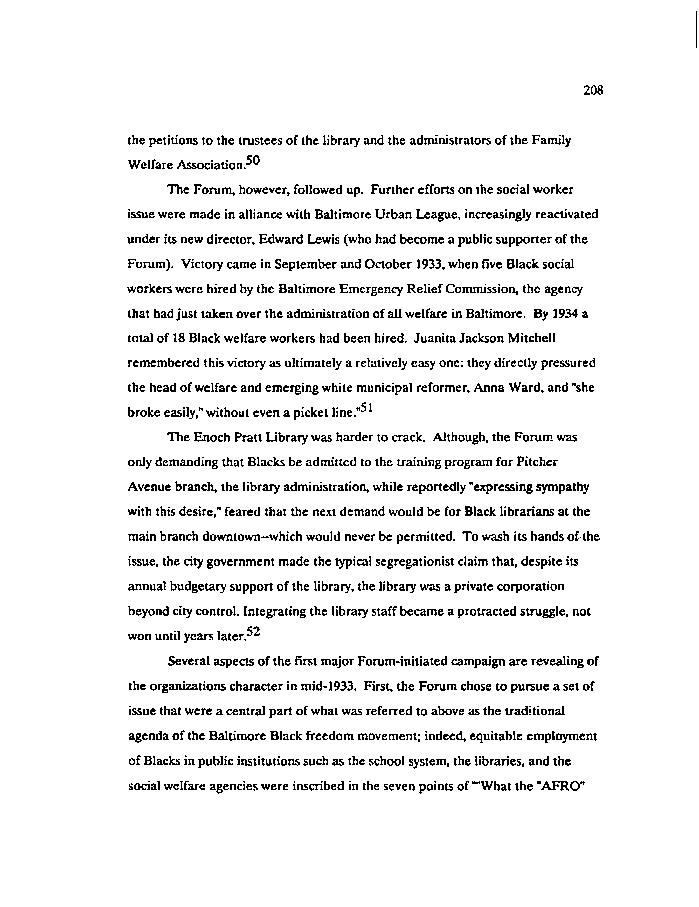|
208
the petitions to the trustees of the library and the administrators of the Family
Welfare Associations"
The Forum, however, followed up. Further efforts on the social worker
issue were made in alliance with Baltimore Urban League, increasingly reactivated
under its new director, Edward Lewis (who had become a public supporter of the
Forum). Victory came in September and October 1933, when five Black social
workers were hired by the Baltimore Emergency Relief Commission, the agency
that had just taken over the administration of all welfare in Baltimore. By 1934 a
total of 18 Black welfare workers had been hired. Juanita Jackson Mitchell
remembered this victory as ultimately a relatively easy one: they directly pressured
the head of welfare and emerging white municipal reformer, Anna Ward, and "she
broke easily," without even a picket line."^
The Enoch Pratt Library was harder to crack. Although, the Forum was
only demanding that Blacks be admitted to the training program for Pitcher
Avenue branch, the library administration, while reportedly "expressing sympathy
with this desire," feared that the next demand would be for Black librarians at the
main branch downtown—which would never be permitted. To wash its hands of the
issue, the city government made the typical segregationist claim that, despite its
annual budgetary support of the library, the library was a private corporation
beyond city control. Integrating the library staff became a protracted struggle, not
won until years later.^
Several aspects of the first major Forum-initiated campaign are revealing of
the organizations character in mid-1933. First, the Forum chose to pursue a set of
issue that were a central part of what was referred to above as the traditional
agenda of the Baltimore Black freedom movement; indeed, equitable employment
of Blacks in public institutions such as the school system, the libraries, and the
social welfare agencies were inscribed in the seven points of ""What the "AFRO"
|

